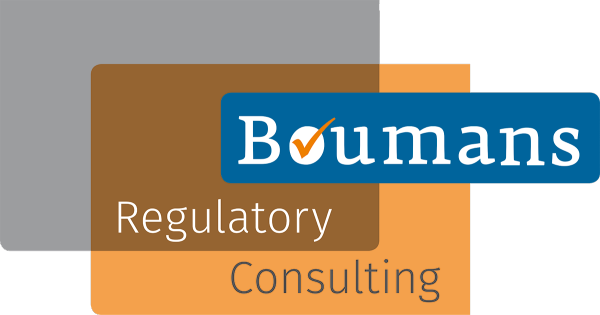Helping your notified body working efficiently
We all know that notified bodies are in short supply and they should work as efficient as possible. There is something we can all do to help: prepare documentation well. It sounds obvious, but I still have to explain to companies that notified body reviewers want to see clear, complete and consistent documentation, presenting an easy to follow narrative.
Let’s focus on consistency, as I see this is often overlooked. In this context consistency means that all statements and evidence are fully in line with each other. This looks easy, and actually, it is. I see problems come up when a manufacturer is trying to make use of some grey areas in the rules. Most common issue: the product must qualify as a medical device, but they try to move it into the lowest possible risk class. It should not come as a surprise that notified body reviewers have seen most of these attempts of evasive actions and they usually recognize them immediately. In other words, if you are not consistent, you are raising suspicion.
This tip of the week is about creating consistency and how to make life easier for Regulatory Affairs staff as well as your notified body reviewer. Working consistently means that you have to define the intended purpose well, justify the status and risk class of the device, consider your Basic UDI-DI grouping and UDI structure and then develop a solid – and consistent – clinical evaluation plan, and keep this consistent through the respective sets of document. And there is Article 120(3) to consider in the case of legacy devices. I also have some examples of inconsistencies that triggered critical responses by the notified body.
Intended purpose
The MDR defines the intended purpose as: the use for which a device is intended according to the data supplied by the manufacturer on the label, in the instructions for use or in promotional or sales materials or statements and as specified by the manufacturer in the clinical evaluation;
Consistency in the intended purpose starts with a very simple rule: use exactly the same words whenever and wherever the intended purpose is mentioned. Create that statement, store it as a controlled document and everywhere this is needed, that exact text should be copied. You can do even better by creating a <field> that automatically populates from a single source. In that way it becomes easier to edit the intended purpose.
It is possible to have two versions of the intended purpose. A ‘short’ version that goes on the label, and an extended version that goes deeper into details like indications and contra-indications, the context of the intervention etc.
A reviewer who keeps seeing exactly the same intended purpose description is more likely to keep working in the same document, compared to one that feels they have to go back to another document to check. Believe me, you don’t want to send your notified body reviewers on search expeditions.
Device status and risk class
Even before the notified body accepts an application, they will look at the justification of the product status and the risk class (see Annex VII, section 4.3). Just take a good look at the definition of a medical device. In the second and third line you can see the words ‘intended by the manufacturer’. This is a reference to the intended purpose.
When analyzing the product status I always start by ‘translating’ the intended purpose into the terms that can be found in the definition of a medical device. ‘This syringe can be used to inject medication’ can be translated into an ‘instrument… intended… to be used… for… treatment… of disease… which does not achieve its principal intended action by pharmacological, immunological or metabolic means…’ This syringe may also be used in a diagnostic procedure, or for alleviation of a disease. From the perspective of the product status that is not relevant. There is at least one use scenario that would bring it into the scope of the MDR and this would be sufficient.
For the risk class it is necessary to look into all the use scenarios. Each should be assessed and only then the most critical scenario in relation the risk assessment can be determined. Here too the intended purpose should taken as the starting point and then applied consistently, because there these use scenarios are defined. For example, dental tools are invasive into a body orifice (Rule 5) but some may also be used surgically invasive (Rule 6). Both rules must be applied.
Basic UDI-DI and UDI-DI
The Basic UDI-DI is the key identifier in EUDAMED of the device grouping. The Basic UDI-DI also identifies the scope of technical documentation. Although in theory it is possible to link multiple documents to one Basic UDI-DI, it is not recommended to do so. A change in one of the typical Basic UDI-DI characteristics may change the Basic UDI-DI and that will also mean that all UDI-DI, including those on the label, will have to be changed. I recommend a high granularity in Basic UDI-DI.
The Basic UDI-DI groups all devices with the same ‘intended purpose, risk class and essential design and manufacturing characteristics’. Here too the intended purpose is crucial. All devices covered by the same Basic UDI-DI should have exactly the same intended purpose. You can be sure notified bodies will dive into the Basic UDI-DI structure as part of processing an application. They will look into the intended purpose on the label or in the instructions for use, and check that with the intended purpose and design and manufacturing characteristics of a specific Basic UDI-DI. If they don’t agree with that, they will ask you to restructure your device groupings and technical documentation. Obviously, there will be a lot of time pressure on that.
Clinical Evaluation
The clinical evaluation will result in defining the acceptability of risks when weighed against the clinical benefits. The definition of the intended purpose states that use of the device must be specified in the clinical evaluation. If you look at this from the perspective of clear and consistent definition of the intended purpose, it is obvious that a clinical evaluation should be identified by only one Basic UDI-DI and only in rare occasions a Basic UDI-DI to be subject in multiple clinical evaluations.
I use the term ‘clinical evaluation’ here on purpose, and not ‘clinical evaluation report’. Clinical evaluation is a continuous process that involves the creation of a Clinical Evaluation Plan, PMS, PMCF and writing of the PMCF Evaluation Report, the PMS Report or PSUR and the Clinical Evaluation Report. Obviously all should have their scope defined by the exactly same intended purpose. PMS and PMCF have, among other things, the function to keep determining over time if the intended purpose is still accurate and supported in the light of the real world data about the device.
Article 120(3)
Article 120(3) allows devices to be placed on the market after the date of application of the MDR while they still rely on certification from the MDD or AIMDD. Here too consistency can be an issue. The question is if you can change the intended purpose significantly from the ‘old’ to the ‘new’ status. The short answer is: yes. You can indeed change the intended purpose as part of developing the documentation for the MDR, because you basically certify for new legislation and not an update of the MDD or AIMDD.
However, there is also a longer answer: carefully consider changing the intended purpose. As long as this change only clarifies the intended purpose or it is more specific, it is possible to rely on MDD clinical data for MDR certification. But at the moment this change goes further, this is no longer possible and you need to create new clinical data based on the new intended purpose. A change in risk class that is not the result of a change in classification rules, may even have consequences for the compliance of the legacy device (see below example).
Examples
Here are some horror stories of how companies got into trouble when they were not clear and consistent with their intended purpose:
- A software manufacturer tried to boil their intended purpose down to such a level that it was no longer considered a medical device. However, it was still CE-marked and it was promoted as a medical device. The authorities noticed that and took action. Where their device under the MDD would be classified as a Class I device, it would be considered Class IIb under the MDR. By the time the authorities reached out to them, it was too late to have a MDD declaration of conformity drawn up under the MDD and they had to stop placing their device on the market until their device was certified under the MDR. Main root cause: different intended purpose on the device as the intended purposed used for marketing.
- A company had grouped their devices according to the device families that were used in marketing. The intended purposes of the devices involved were not all identical and there were also differences in the essential design characteristics. There were even differences in risk class. The notified body did not accept this application and the company was send back to the line. Main root cause: assuming the ‘old’ device families would be covered by the Basic UDI-DI.
- The intended purpose for a Basic UDI-DI was defined too widely in order to cover wide range of devices. As a result there were too many claims that should have been addressed in the clinical evaluation. But they were not, so the notified body came to the conclusion that not all claims in the intended purpose were addressed in the clinical evaluation. This ended an almost full certification procedure, sending the manufacturer to the back of the line. Main root cause: the company thought it would be efficient to cover too many devices in the same single set of documentation.
- A surgically invasive devices was under the MDD classified as Class IIa. It was used frequently off label for procedures where it came in direct contact with the central nervous system. As part of the MDR certification it was decided to add this use to the intended purpose of this device. This would result in Class III. This is not an up-classification resulting from a change in the classification rules; it is a change in intended purpose. This means that the device should have been in a different risk class under the MDD (Class III). This has two consequences. The first is that the clinical data cannot of the MDD device cannot be used as evidence for the MDR certification. The second is that this could draw attention from the notified body and the authorities about how this company handled their post-market surveillance regarding this off-label use. Main root cause: this is a legacy device with a legacy problem caused by inconsistencies in the intended purpose.
Conclusion
Make sure you understand where the intended purpose is needed for and what it influences. Define it well and then apply it consistently to all documents.
If you want to have a consistency check done on the intended purpose, or other strategic help with your notified body application preparations, just reach out to ronald@boumansconsulting.com





